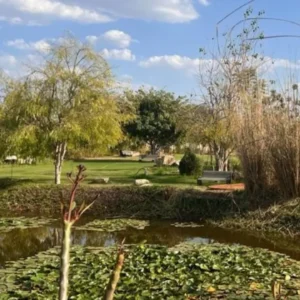Near Rajasthan’s Dausa district, in the Abhaneri or Abaneri hamlet, is the Hindu shrine known as the Harshat Mata Temple. One of the world’s biggest and most gorgeous step wells, Chand Baori, is located not far from the temple. The ruler of Abhaneri erected this temple using a distinctive style of construction. Though some art historians speculate that it was initially a Vaishnavite shrine, the temple is devoted to the goddess Harshat Mata.
The Temple’s History
Over numerous centuries, the original Harshat Mata temple was destroyed and altered. Although no epigraphic evidence of the temple’s construction has been found, historians assume that it was erected in the early ninth century, soon after the Chand Baori stepwell next to it. This is based on an analysis of the architectural and sculptural styles of the temple. The original creator of the temple is unknown, although historians speculate that he or she may have been a Gurjara-Pratihara ruler who collaborated with a local Chahamana vassal. When Muhammad Ghazni conquered India in the 10th century, he destroyed the temple. The temple is currently under the protection of the Archaeological Survey of India, yet it is still in use for worship.
The Temple’s Architecture
The original temple seems to have been constructed in the Panchayatana architectural style, which includes a primary shrine around four subsidiary shrines. The lofty shikhara tower has been replaced with a roof-dome, and the only portions of the main shrine that are still standing today have been destroyed and altered over many years. The majority of the statues have been transported to the museums in Amber and Jaipur, but a large portion of the platform still exists along with remnants of the original structure’s carved stones.
The temple’s entrance faces east, in the direction of the rising sun. The temple complex is constructed on two large stepped terraces (jagati), which were once surrounded by a roadway for circumambulation but are now mostly destroyed. A rather plain set of foundation and base mouldings (vedibandha), which have ornate designs on the top, define the limit of the lower terrace. The entry stairway is flanked by the remnants of two little shrines. The single intact artwork on the upper terrace, which is much more ornate but has mostly been damaged, is of Narasimha standing between two soldiers.
On the upper terrace could have been the four auxiliary shrines. According to Frank Reitz, the four auxiliary shrines were situated to Surya (north-west corner), Ganesha (north-east corner), Kartikeya (south-east corner), and Lakshmi-Narayana or Uma-Maheshvara. Reitz believes that Durga was the temple’s primary idol throughout its history (south-west). Reitz’s theory is supported by research into other modern and recent temples, as well as by examination of numerous fragments discovered at the Chand Baori site or kept in other museums.
Decorative Motifs and Sculpture
The original main shrine had a superstructure (shikhara) tower and was much taller. The superstructure, however, was demolished and subsequently replaced with a straightforward dome. The wall carvings of the temple mostly disappeared. Sculptures of Vishnu, his Vahana, the Garuda, Balarama, apsaras (celestial women), a Vyala (leogryph), Agni, a male with four arms sitting like Shiva, a male sitting on a Makara (mythical sea creature), a male kneeling while having his foot massaged by four female attendants, dancers, and musicians are among the sculptures that have survived.
Abhaneri Festival by Rajasthan Tourism
Since 2008, the two-day Abhaneri Festival has been hosted every October by the Rajasthan Tourism Department. The yearly event has gathered quite a bit of momentum in recent years. Tourists from all over the world attend the festival, which is hosted in the nearby village of Dausa. Various Rajasthani traditional acts, including Ghoomar, Kalbeliya, Kachhi Ghodi, Langa, Raas Leela, and Bhawai, are performed by the people. During the festival, there are puppet shows and art and craft displays.
Information for Visitors
When to Visit Abhaneri is Best
When the weather is quite nice, between October and March is the ideal time to visit Harshat Mata Temple Abhaneri.
Timing of Harshat Mata Temple
The hours of operation are from 6:00 am to 6:00 pm daily.
Entry fees at the Harshat Mata Temple
There is no admittance fee for this house of worship.
How to get to Abhaneri’s Harshat Mata Temple
The Harshat Mata Temple is located in the town of Abhaneri, 95 kilometres from Rajasthan’s capital city of Jaipur. Hire a taxi from Jaipur to travel to Harshat Mata Temple Abhaneri. There are no buses that travel from Jaipur to Abhaneri directly. The journey can be divided into two parts if someone is travelling on a tight budget and wants to take public transportation to go to the temple. One can hire a jeep or cab, depending on what is available, to go first from Jaipur to Sikandra and then from Sikandra to Abhaneri.
Your stay while visiting Harshat Mata Temple is just as important as your visit, Sariska Manor provides you the comfort and luxury stay with wide ranges of experiences of nature’s bliss.
Featured Image credit: hindi.holidayrider.com




